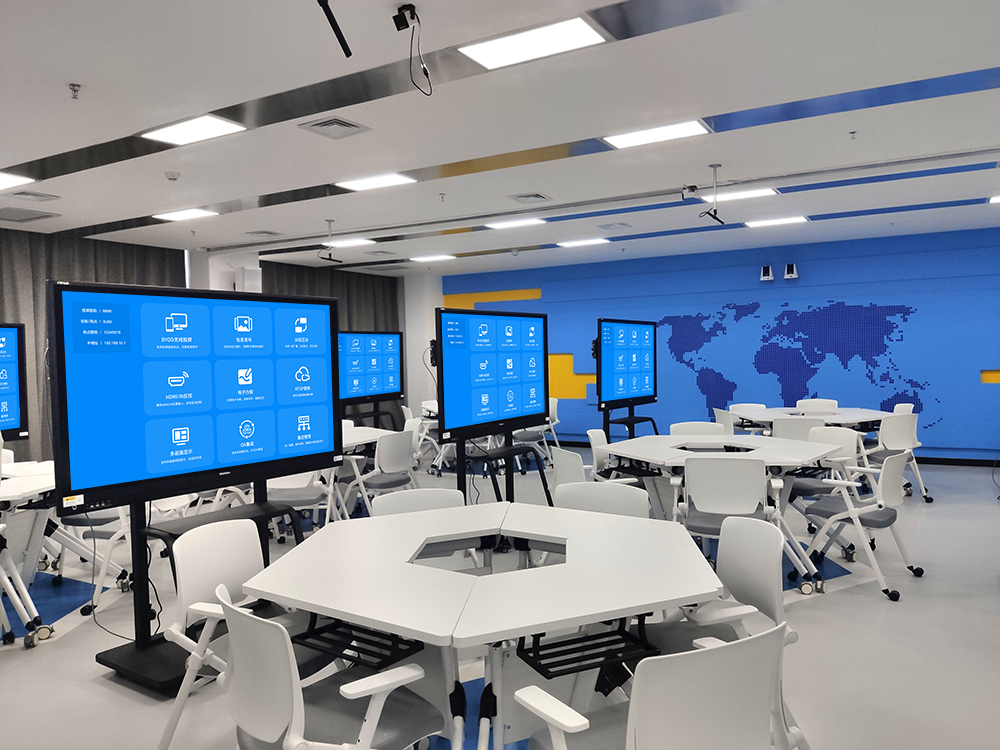Multi-Screen Interaction: A New Experience in Cross-Device Collaboration
The multi-screen interaction solution breaks down the barriers between phones, computers, tablets, and large displays. With its core features of universal compatibility, easy operation, and powerful linkage, it enables cross-screen content transfer and multi-device collaboration. Covering scenarios like office, education, and home, it makes information delivery more efficient and the interactive experience richer.
Universal Device Interconnection, Breaking Down Scene Boundaries
It’s deeply compatible with Android/iOS phones, Windows/macOS computers, and tablets, as well as smart TVs, meeting screens, and projectors. The compatibility rate is over 95%, so both new and old devices can easily connect.
- Instant Pairing: When devices are on the same network, they are automatically recognized. The “Wireless Display” function on a phone or the “Project” function on a computer can be activated with one tap to start the connection, and multi-screen collaboration will be completed in under 2 seconds.
- Multi-Mode Connection: It supports wireless mirroring, QR code connection, and quick Bluetooth pairing. Paired with HDMI/Type-C wired adapters, it can handle complex signal environments with no dead spots.
- Frequent Device Memory: It automatically remembers frequently connected devices and will show a pop-up to remind you to connect when you’re nearby, making the operation more convenient.
Diverse Interactive Functions, Activating Collaborative Value
1. Free Cross-Screen Content Transfer
- Two-Way Mirroring: You can mirror a proposal from your phone to a large display, and the large display can also control your phone to flip pages and switch content. You can mirror your computer to a tablet to use it as a “mobile second screen” so you can edit a document while looking up information, making multitasking more efficient.
- Split-Screen Display: It supports 2-4 devices mirroring content at the same time. The main display is divided into a section for each. In an office, you can compare proposals. In a classroom, you can show a group’s work at a glance.
- Fast File Transfer: You can transfer images, documents, and videos directly between multiple devices with a “mirroring pop-up,” with no need for Bluetooth or a USB drive. The transfer speed is up to 10MB/s, so material is shared instantly.
2. In-Depth Multi-Device Collaboration
- Real-Time Annotation: In meetings and classes, a phone, computer, and large display can be used to highlight, annotate, and add text to the mirrored content. The annotations are synchronized to all devices in real time, so feedback is compiled instantly, with no need for repeated communication.
- Convenient Remote Control: A teacher can use a tablet to remotely control a large display’s lesson to flip pages. A presenter can use their phone to adjust the mirroring volume and switch content, freeing them from their device and making the operation more flexible.
- Multi-Screen Entertainment: For home entertainment, you can mirror a movie or a show from your phone to the TV and use a tablet at the same time for interactive comments. You can also mirror a game from your computer to a projector and use your phone as a controller for a more immersive experience.

Versatile for Real-Life Scenarios
Office Collaboration: Doubled Efficiency
- During a project discussion, members can mirror their proposals from their computers to a large display to compare differences in a split-screen view. A photo taken with a phone of an on-site problem can be mirrored instantly to the large display, which helps focus the discussion and boosts decision-making efficiency by 40%.
- For a remote meeting, a colleague can mirror their presentation from their computer. The local team can then use a tablet to annotate their feedback, making online and offline collaboration seamless.
Classroom Interaction: More Lively Classes
- A teacher can use a computer to mirror a lesson and a tablet to annotate key points in real time. The content is synchronized to the large display and student devices. A student can mirror their homework from their phone, and the whole class can critique it, boosting classroom participation by 50%.
- During a group discussion, each group can mirror its work to a small group screen. For the summary, a teacher can push a group’s work to the main display with one tap, making the presentation more organized and feedback more precise.
Home Entertainment: Sharing Warm Moments
- For family fun, you can mirror an educational animation from your phone to the TV, and a parent can use a tablet at the same time to explain things. At a family gathering, you can take turns mirroring photos and short videos, sharing happy moments on a large screen without having to huddle around a small one.
- When watching a movie, you can mirror it from your phone to the TV. It supports a “picture-in-picture” function, so you can still check messages and answer calls without interrupting playback.
Smart Management, Secure and Convenient
- Tiered Access Control: You can set administrator and user permissions, so only authorized devices can initiate mirroring and change content, which prevents unwanted interference.
- Remote Monitoring and Maintenance: An administrator can check a device’s online status and mirroring records in the backend. It supports remote firmware upgrades and on/off functions, which reduces maintenance costs.
- Encrypted Transmission: Content transmission is encrypted, which prevents the leakage of business secrets and personal privacy.
Deployment is simple. An existing device can be used just by being powered on and connected to the network, with no modification of wiring required. The multi-screen interaction solution, with its advantages of “collaboration, flexibility, and efficiency,” allows each device to reach its full potential and easily adapts to a variety of scenarios.